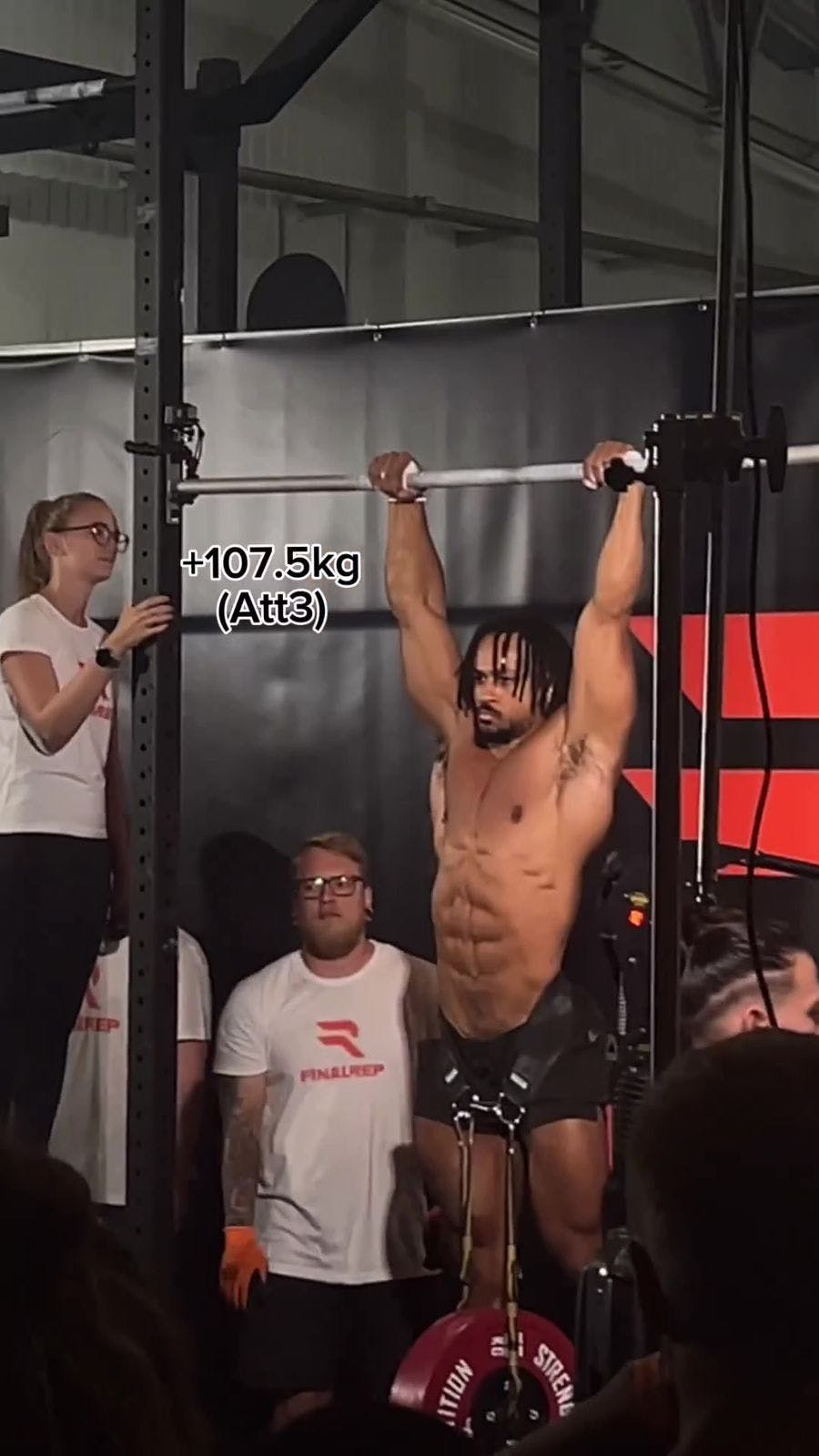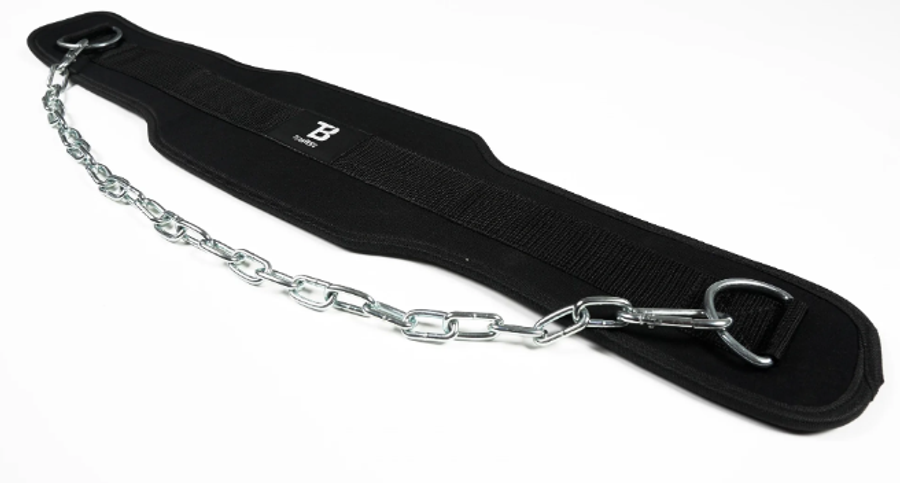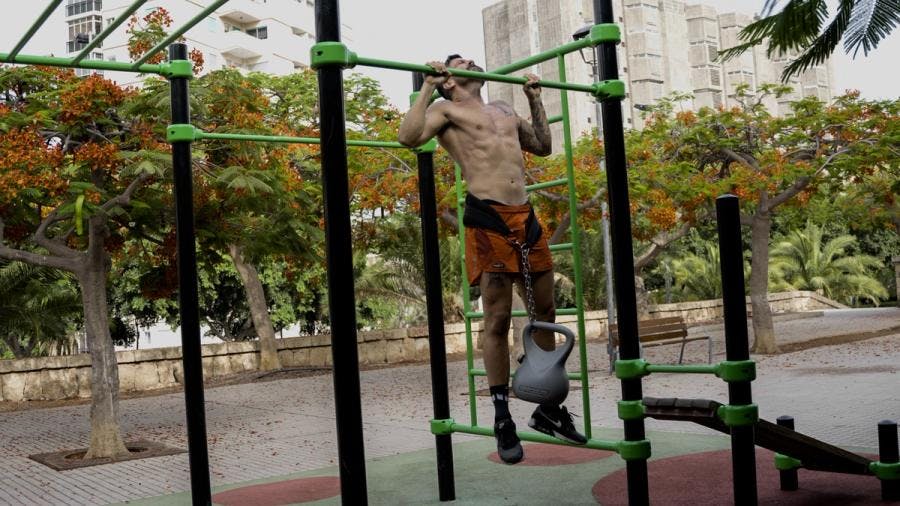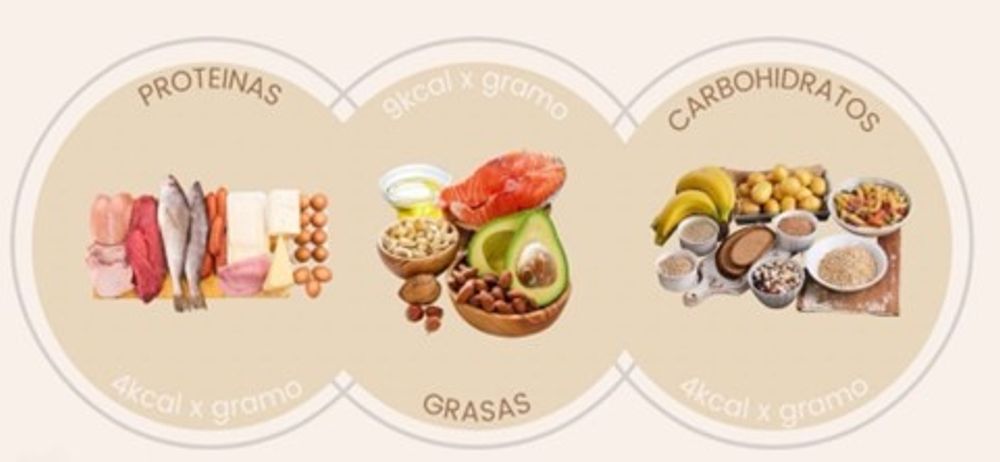
Calisthenics for beginners: exercises and routine
Calisthenics routines for beginners, exercises by level, and complete workout to progress safely and effectively.

One of the branches of calisthenics that is growing more widely in recent years is StreetLifting. Consisting of doing basic calisthenics exercises such as pull-ups, dips, muscle ups or squats with added weight.
In my opinion, Street Lifting seems like an incredible sport, since it combines aspects of calisthenics and Powerlifting creating a spectacular result. Starting from the basis of body weight control exercises such as basic calisthenics movements, we add the factor of maximum strength when using added weight, but, to obtain the best results, you are obliged not to have excess body fat since this It would worsen your performance in all exercises except the squat.
Therefore, we get incredibly strong athletes who maintain Streetlifter demigod physiques and lift brutal weights. In the case of the best in the world, it is normal for them to lift significantly more than their own body weight in pull-ups and several times their body weight in dips. We even already have cases of athletes who lift a good part of their own body weight in muscle up.

Other positive aspects of Streetlifting are that it allows you an easier progression in the different exercises, as you just have to try to be able to lift more weight over time. And that, for those who don't want to complicate things, allows you to give your legs a good stimulus, because if you want to be a good athlete in this sport you have to have squat PRs worthy of a Powerlifter, so it is rare to see Streetlifters who are unbalanced and have chicken legs.
Preparation: minimum requirements for weighted pull-ups and weighted dips
To start with the tutorial, let's see what I recommend as a basic level before starting to train with added weight.
From my point of view it is evident that you must have a certain experience and level doing the exercises in their bodyweight version before starting to add extra weight to them. Specifically, to have a reference scale, I would say that in pull-ups you must be able to do at least 10, and in dips about 12, and, in both cases, have been working at that level for at least 3 months, so that your connective tissue is adapted to those exercises.

Once you have that initial level, I recommend that, before adding extra weight, you review and learn the details of the technique, so that you get off to a good start. For this you have articles in which I talk about this topic like this one.
Finally, before adding extra weight to your exercises, you should know how you are going to add that weight. For this you have several options. The most common is to buy a weight belt with a chain, and put discs on it. But there are other options that are often used, such as climbing ropes, martial arts belts or any other solution that allows you to hang weight from your waist.

To work with low and moderate weights there is also the option of weighted vests, backpacks and more. The problem is that normally these solutions do not allow you to increase to higher weights when you already have more experience, so they can help you at first, but over time you will have to look for another option. Regarding weight, more of the same, when you require little weight you can use bricks, stones, water jugs or anything that has a certain weight and you can hang on, and over time, when you are more advanced you will require discs or kettlebell to be able to work with heavier weights.
Once you have the required level without weight and you know the basics of the technique of weighted exercises, we can start using extra weight. I recommend starting with very little weight, with 2.5 or 5 kilos at most (5 to 10 lb), depending on your level. And work in strength sets, between 1 and 5 repetitions. If you see that with that weight you can do 5 repetitions easily, I also recommend leaving a reasonable amount of time of one or two weeks for your body to adapt before continuing to increase the weight.
If you see that this initial weight does require considerable effort, my recommendation is that you work with it and try to progress until you can complete 3 sets of 5 repetitions. And from there, increase the weight slightly and repeat the process, trying to progress little by little as the weeks go by.

Once you have found a weight that is really challenging for you and close to your real limits, it will require the use of more complex programming and with more variations to continue progressing, but we will discuss that in other articles.
As a basic initial strategy, simply try to work at a strength range, between 1 and 5 repetitions, and increase the weight when that range is too small for you and you will have good results and you will progress without problem.
Regarding rest times, I recommend using long breaks, since you are working strength, between 2 and 5 minutes between sets, depending on the perceived difficulty.
As I have been recommending for a few months now, I think the best distribution is push, pull, legs. Since today we are talking about training with weight, what we would do is put the weighted pull-ups on the pull day, the weighted dips on the push day, and obviously on the leg day we would have heavy squats. If you also want to do weighted muscle up, I recommend doing it on a separate 4th day, since if you do it on the same day as the pull-ups there will be a lot of interference between these two exercises and you will not be able to take advantage of one of them.
I'll quickly tell you how I am currently distributing my routines in case it can help you and make it clearer, right now in my weekly planning I have:
* A first day of pushing, in which I do weighted dips at strength range (with a lot of weight), weighted dips at hypertrophy range (with less weight) and then I do complementary exercises with machines, free weights, push-ups, etc.
* On the second day I do legs, with heavy squats at the strength range, then at the hypertrophy range and complemented with exercises with machines, lunges, Bulgarians and others.
* The third day is the pull day, in which I do pull-ups at strength range with a lot of weight, at hypertrophy range with less, and then machines and other exercises.
* And on the fourth day I have weighted muscle up, weighted handstand push-ups, repeat squat and then fill in with other muscle groups that perhaps I have not worked as directly like abdominals, lateral delts, forearms or some extra leg exercises.
With that I have a full week, but if I feel like training one more day what I usually do is go to the park and do a little planche, front lever, some more muscle up or whatever I feel like at that moment.
We are going to make a final summary so that you are clear about what the path to follow would be before concluding:
* First of all, you must have a basic level of mastery of the exercises without weight, and have been training them for some time.
* Second, you must learn the specific technical details of weighted exercises.
* Next, you must have the necessary material to add weight.
* And finally, you can start weighting themselves with low weights and progress little by little from there.
So now you know, with what I just explained to you, you now have a guide on all the steps you have to follow to start training with ballast and take advantage of these exercises that can give us so many benefits.
Before finishing, remind you that Calisteniapp has examples of weighted routines so you can use them as a reference, take a look in the "workouts" section on the web or directly on the app.
I hope this article helps you a lot,
Yerai Alonso

Yerai Alonso
Cofundador de Calisteniapp, referente en calistenia y el street workout en Español. Con más de una década de experiencia, es creador de uno de los canales de YouTube más influyentes del sector. Autor del libro La calle es tu gimnasio, campeón de Canarias y jurado en competiciones nacionales e internacionales.
Join our newsletter
Learn everything you need to know about calisthenics

Calisthenics routines for beginners, exercises by level, and complete workout to progress safely and effectively.

Learn all about macronutrients: their roles, types, and the importance of nutrient timing for sports performance. Read our complete guide for athletes.

Not sure what to eat before training calisthenics? In this article, we explain the ideal pre-workout nutrition based on your specific type of training session.
